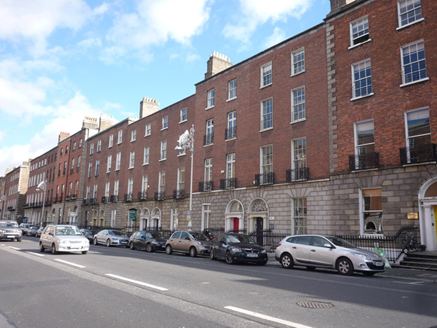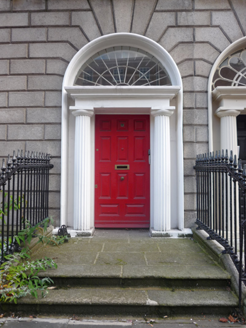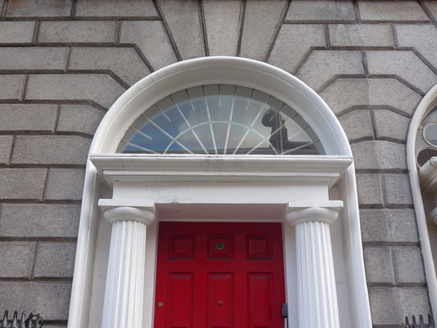Survey Data
Reg No
50930145
Rating
Regional
Categories of Special Interest
Architectural, Artistic
Original Use
House
In Use As
Office
Date
1815 - 1835
Coordinates
316480, 232845
Date Recorded
28/08/2015
Date Updated
--/--/--
Description
Attached two-bay four-storey over basement former townhouse, built c. 1825, as a pair with No. 18 (50930146). Two-stage hip-roofed return to rear (east) elevation. Now in use as office. M-profiled roof, hipped to south, concealed by brick parapet with ashlar granite eaves and moulded granite coping. Pair of shouldered brick chimneystacks to north party wall with lipped yellow clay pots. Red brick walling laid in Flemish bond, rusticated ashlar granite walling to ground floor, rendered walls to basement beneath granite stringcourse. Smooth rendered walling to rear (east) elevation. Square-headed window openings with brick voussoirs, rendered reveals and granite sills. Decorative iron balconettes to first and second floor openings. Largely bipartite timber casement windows with overlights and scalloped trim to head of ground floor opening, two-over-two timber sliding sash windows to third floor with convex horns (diminished in height) and possibly original ten-over-ten sash to basement having cast-iron grille affixed. Round-headed door opening with moulded rendered reveals and recessed surround with Greek-Doric portico having plain frieze and moulded cornice supported on fluted Doric columns, with replacement fanlight and raised-and-field timber panelled door. Granite entrance platform with cast-iron boot scraper, approached by two bull-nosed granite steps and flanked by cast-iron railings with decorative arrow finials over granite plinth, enclosing basement well to north. Replacement mild-steel steps to basement with plainly detailed replacement door beneath entrance platform. Coal-hole cover to pavement. Modernised or replacement two-storey mews building to rear plot, concealed by smooth rendered boundary wall with limestone rubble parapet with concrete coping, and pierced by square-headed vehicular and pedestrian openings, largely with timber sheeted doors.
Appraisal
Although it has lost some historic fabric, this fine Georgian-style former townhouse is characterised by restrained external detailing and well-balanced proportions. It retains noteworthy features including a Greek-Doric portico, iron balconettes and some sash windows. Although the streetscape is largely cohesive in appearance, slight variations between the groups of houses on Fitzwilliam Place is illustrative of the incremental nature of speculative development during this period. Developed in conjunction with the east and south sides of Fitzwilliam Square, the eastern side of Fitzwilliam Place was completed by 1836, with the exception of five houses to the south-end, which were built c. 1840.















